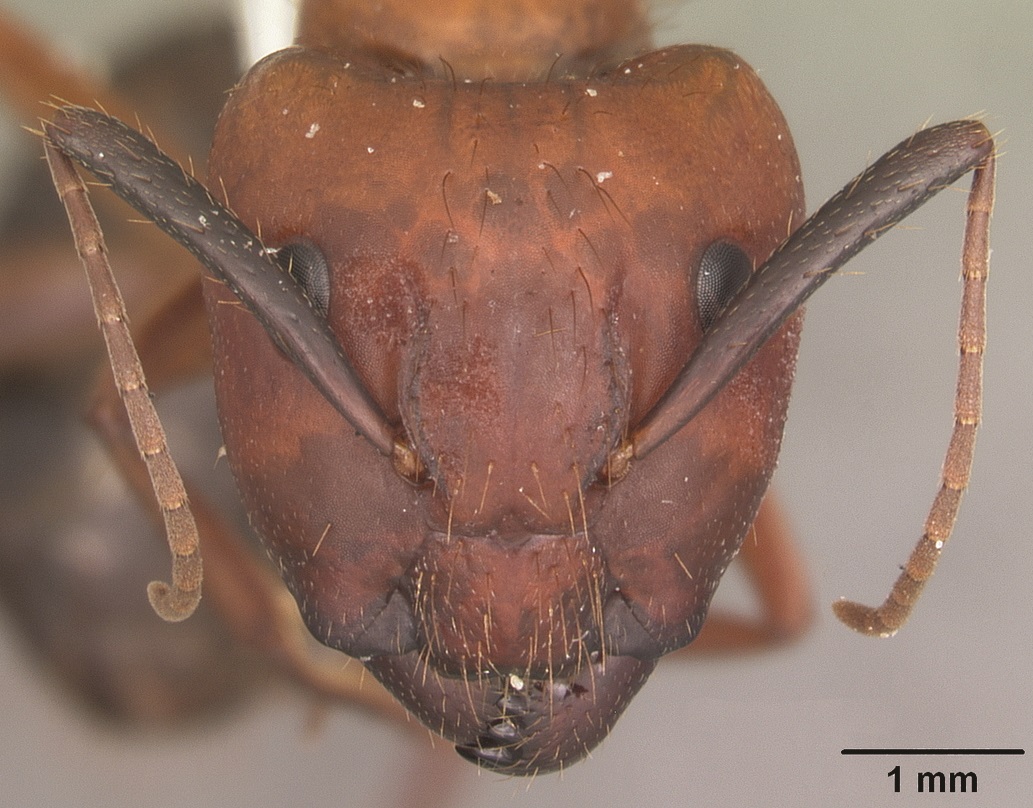Vanderbilt researcher finds evidence for ant caste systems driven by chemo-sensing responses
By Andy Flick, Evolutionary Studies scientific coordinator
Stephen Ferguson, first-author of a new paper with his postdoctoral advisor, Laurence Zwiebel, Cornelius Vanderbilt Chair in Biological Sciences, and two undergraduates associated with the lab, Isaac Bakis (alumnus) and Nicholas Edwards, confirmed the existence of a specialized soldier caste within an ant species in a paper titled, “Olfactory sensitivity differentiates morphologically distinct worker castes in Camponotus floridanus.” By exposing different members of the ant society to olfactory chemicals and quantifying their reactions, the team parsed out differences between smaller (minor caste) and larger (major caste) ants. Previous experiments have shown that minors performed most of the colony maintenance tasks, such as foraging and brood care. The role of majors was unclear, and majors infrequently, if ever, engaged in routine colony maintenance tasks.
According to the article, previous studies have shown that ants sense odorants in their environment using neurons that are distributed along their antennae as well as other sensory areas of their bodies. These neurons help ants detect chemical pheromones and cuticular hydrocarbons used for communication. The team exposed ants of each caste to around 400 odorants making up 36 odor blends, including a compound closely related to a pheromone secreted by the ants to create an odor trail for nestmates to follow to resources like food.
The results of the chemo-sensing experiment suggest that minors can detect a broad range of odors and pheromones and are jacks-of-all trades responsible for many necessary activities in the nest, while majors are fine-tuned to detect chemical cues associated with enemy intruders and are primarily soldiers. When encountering non-nestmate chemical signals, majors were more aggressive and more likely to subdue and kill potential enemies than minors. On the other hand, the team found that while minors detected and followed a trail pheromone, majors treated it no differently than any other chemical odor.
According to Ferguson, “the evolution of different castes within the colony enhances their ability to perform specialized tasks, such as defending the colony as large, heavily armored, and deadly soldiers.”

Moreover, the group found significant differences in the physiology of minors and majors. While minor workers could smell many general odorants and pheromones, majors were seemingly anosmic. As the concentration of the odors increased, the responses of minors also increased. However, majors had a greatly dimished sensitivity to odors with the exception of those found on enemy non-nestmates.
“Ants are fascinating because of the immense complexity of their social behavior. At first glance, a single ant might seem lost, aimlessly wandering about the pavement, but as a collective, the workers are able to cooperate with one another to build incredible societies. Ants achieve impressive feats because of their highly evolved olfactory system, which allows them to exchange information with one another through the use of chemical signals,” Ferguson said.
“Looking forward, we want to better understand how aggression is regulated between enemy non-nestmate ants by identifying the precise molecular components in the antennae and brain which are responsible for detecting and processing olfactory signals, respectively,” he continued.
Learn more about their work, and ants in general, in this article in The Conversation.
Funding Statement: This work was supported by a grant from the National Institutes of Health (NIGMS/RO1GM128336) to LJZ and with endowment funding from Vanderbilt University.
Citation: Ferguson, S.T., Bakis, I., Edwards, N.D. Zwiebel, L.J. 2023. Olfactory sensitivity differentiates morphologically distinct worker castes in Camponotus floridanus. BMC Biol 21, 3. https://doi.org/10.1186/s12915-022-01505-x